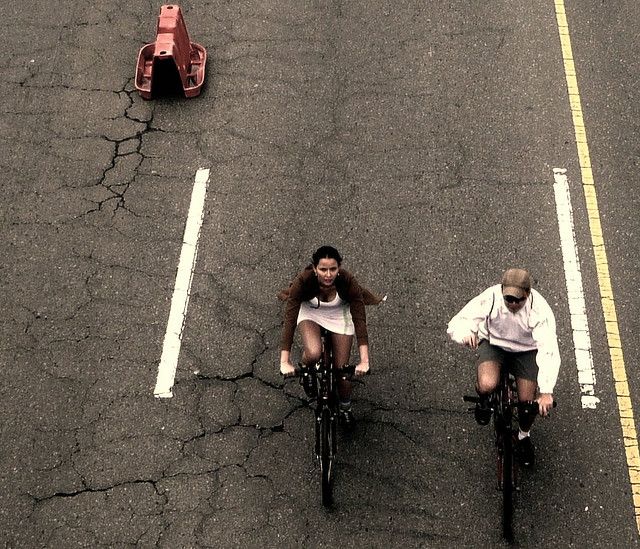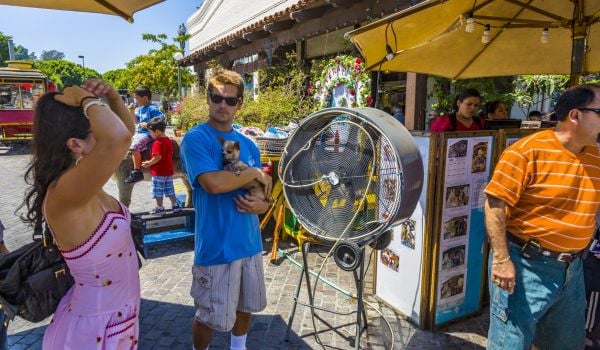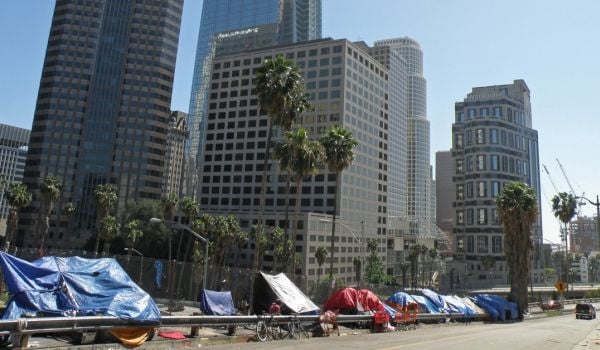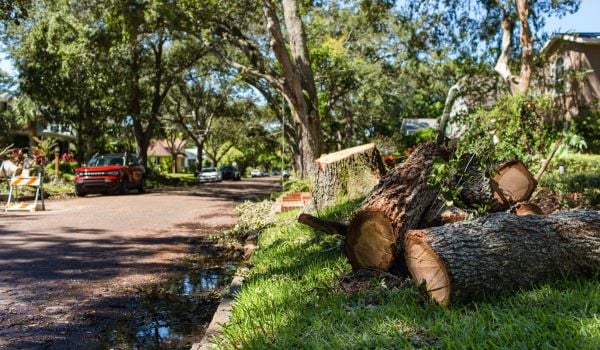Earlier this month, this space detailed the planning efforts for Los Angeles’ first CicLAvía – the local version of the growing global “Ciclovía” movement where – at least for a few hours on Sundays – city streets are thrown open to bicyclists, pedestrians, rollerbladers and the like, while cars and trucks are prohibited.
Mike Lydon was one of the planning experts mentioned in that piece – which is posted here . Lydon is the Founding Principal of The Street Plans Collaborative, a New York City and Miami-based urban planning, advocacy, and design firm, as well as a Next American City 2009 Vanguard. Lydon also co-authored this book, and back when he resided in Miami, was instrumental in producing the Miami Bicycle Master Plan, and the introduction of Miami’s Ciclovías, called Bike Miami Days.
Lydon spoke recently with City Culture. This is Part Two of the conversation, which has been edited for clarity and length.
City / Culture: What can starting a Ciclovía mean to a city in the both the short and the long run?
Mike Lydon: Ciclovías – or, “open streets initiatives” as we call them – tend to allow you to temporarily provide that infrastructure, that place>/I>, for people to walk and bike and be healthy and socialize and meet other.
In the long term, it’s more difficult to implement bike lanes and bike paths – political processes take more money, more effort, more community outreach; it’s a slower process. So a Ciclovía is a way to provide an infrastructure on a temporary basis and also build the support to be able to do it more politically feasible in the future.
City / Culture: You’ve described Bogotá – home of a wildly popular Ciclovía – as a “pattern city.” What’s the next transit-oriented innovation that might migrate from there?
Mike Lydon: I’m not sure if Bogotá pioneered “bike highways” – very long and well-defined bike paths – but they are certainly a centerpiece of the city’s transportation infrastructure. Bogotá has bike highways that come from the hinterlands into the cities, connecting the poorest neighborhoods with the city centers. This demonstrates how we can integrate cycling as a regional way of traveling, and not just a local way of getting around. This also helps democratize and give more access into the center of the city – where the jobs are – to people living on the edges.
Bike highways are also under discussion elsewhere. London is trying to do what they call “bicycle superhighways.” They have twelve different routes designated; those are under review and being implemented to varying degrees of success.
City / Culture: You’ve got a mayor there who is a well-known bicyclist.
Mike Lydon: Right. Boris [Johnson].
City / Culture: Yeah, the Conservative, columnist, and well-known rider. You know, just a couple of years ago when [Ken] Livingstone was the mayor all the action was over congestion pricing and SUVs, which they derisively called, “Chelsea Tractors.”
Okay, staying international here, do you agree that there a certain irony to China and India ramping up auto manufacturing and their citizenries pursuing car and truck ownership, whereas here, at least certain pockets of folks here are trying to move in the opposite direction? How can that be explained?
Mike Lydon: That’s a really fascinated trend, and one where North American countries seem to have been successful at exporting the worst of our model in terms of industrializing and striving to become a leading nation economically. We’ve exported that model of sprawl and single-family home and car ownership as being the key to “success.” And, of course, the attendant infrastructure that goes along with that is one of the worst patterns our country has set for places like India and China to define success.
Have you read the book, Break Through by Michael Shellenberger and Ted Nordhaus? They are two lads who were in the environmental movement for about 25 years and found that they kept coming up against loggerheads with other people in the movement; they weren’t getting anywhere; they felt frustrated.
Break Through is about how they started to realize that many countries that were sort of falling into the worst of examples were doing so because you can’t expect people to take the “high road” – the biking, the walking, all the trends – or have concerns from those environmental perspectives unless they are first made prosperous. When did Americans start to take on environmental activism? It was really the `60s and `70s, when many Americans had reached a standard of living that was very comfortable and we could take the time out of the day to go to a public meeting or a protest to raise flags on certain issues.
Really what’s happening in India and China is that there’s some of that drive where the awareness kicks in, that concern, that you need to build a critical mass of people who have enough time to spend on advocacy and think about issues in the larger picture. And it’s difficult for us to expect otherwise under the current model. Now they could certainly start to import another model – maybe a European model. But we don’t see them doing that. I feel like until enough people reach a standard of living that’s comparable to the West, I don’t think you’ll see a lot of Chinese people eager to continue on with their bicycles, simply for an environmental point-of-view. I think it’s going to be a much bigger shift that happens before that, “Oh shit!” moment happens, and they realize, “This is going to be a bad path to be on.” As much as we can try to shame them into it, I don’t think they will listen.
City / Culture: Last question. CicLAvia and Bike Miami Days meant closing streets throughout two cities, respectively. But there are other ways to have bike happenings. In New York City, adjacent to Central Park, and in San Francisco, around the Golden Gate Park, streets get shut to cars and trucks and throngs of people are out biking and jogging and roller-disco-ing. Also, in 2003, Bob Gottlieb – a professor here in L.A. – led a successful and authorized effort to shut down for a day six or seven miles of one of the regions freeways to cars and trucks. Gottlieb told me recently that he prefers the Ciclovía model, but that it was too hard to achieve back then.
What’s your view on shutting down the roads that surround a park, or shutting down a stretch of highway, as opposed to the connecting routes that you’ve seen elsewhere?
Mike Lydon: We’ve researched all types of routes. I think your answer really depends on what the goal of the initiative is. If it’s the Ottawa, Canada – or the “parkway” model – which is closing your highway or river drive or roads within a park, then that’s clearly for transportation and nice accessibility within the park itself, and its more purely recreational. If that’s your only intent, then that’s model is great.
But If you have a much larger idea in mind – if you’re trying to get people to neighborhoods, have a cultural, social, economical, and political impact – then you really
do have to think about using the more Bogotá, or we call it the “Cleveland” model or the “San Francisco” model, where cities really activate the public space to become in a way the linear playground for people.
This model provides a way to meet and to exercise, yes, but also for people to really integrate into these neighborhoods without the fear or the space concerns of automobiles. There are so many spin-off benefits of this that can’t be accomplished through the parkway model. If the whole goal is to do active transportation and have recreation available, but also to do so much more, then you have to look at these other models and say, well, “How can we keep that and adapt it to our context with our local groups and our communities and our neighborhoods and our downtowns? How do we create the best possible example of what our streets can be when we close them to cars and open them to people?”









_920_518_600_350_80_s_c1.jpg)






